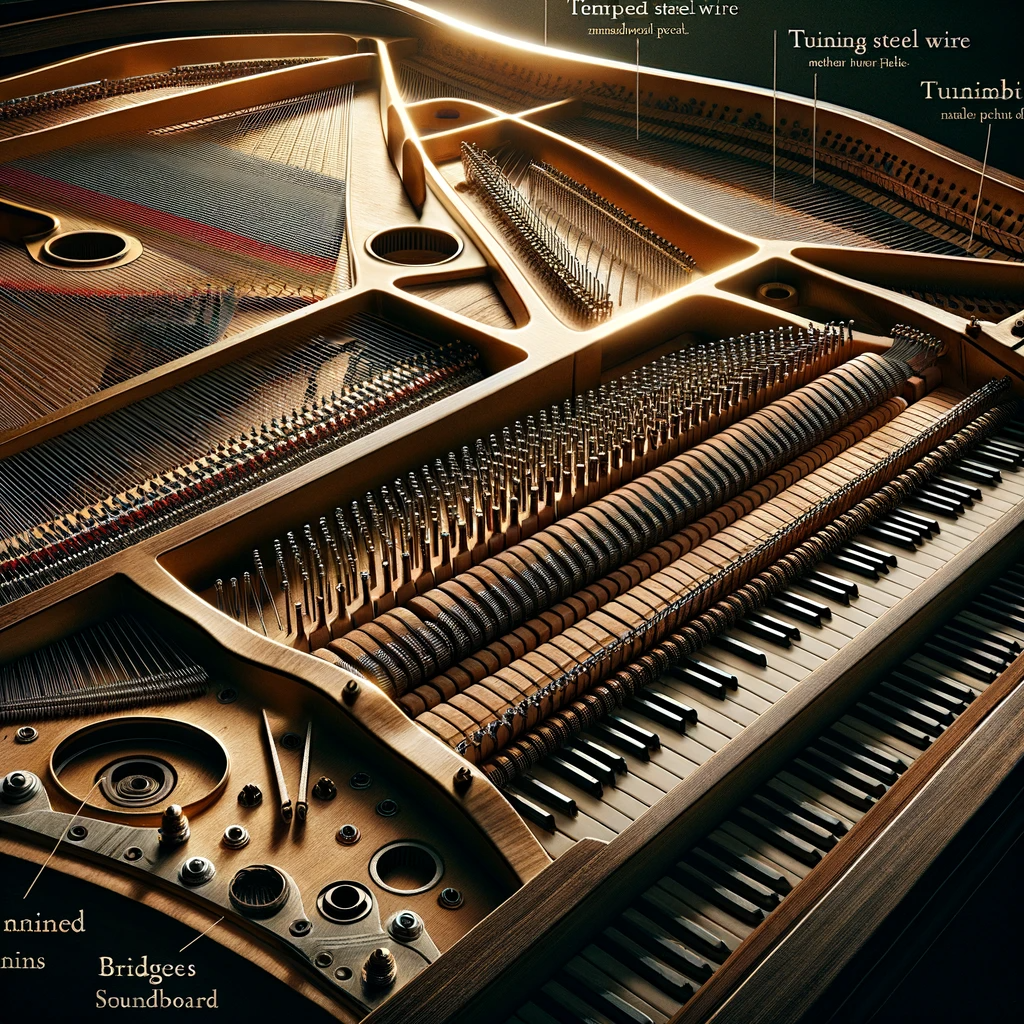Introduction

Piano tuning is a critical process that ensures the instrument produces accurate and pleasing tones. It involves adjusting the tension of the piano strings to bring them into perfect harmony, allowing for a balanced and rich sound. Without regular tuning, a piano’s pitch can drift, leading to dissonance and an unsatisfying playing experience.
The Importance of Piano Tuning
Piano tuning is essential because it maintains the integrity of the instrument’s sound. Over time, due to changes in temperature and humidity or general wear and tear, the strings in a piano gradually lose their tension. This causes the pitch to shift, resulting in an out-of-tune sound that can be displeasing to both listeners and performers.
A properly tuned piano provides accurate tonal representation across all registers, enabling musicians to express themselves effectively. It allows for precise control over dynamics, articulation, and musical expression in various genres and styles.
The Role of a Piano Tuner
A piano tuner is a highly skilled professional who specializes in adjusting string tension to achieve optimal pitch accuracy. They possess a keen ear for detecting minute changes in tonal quality and have extensive knowledge of various tuning techniques.
The role of a piano tuner goes beyond simply adjusting string tension; they are also responsible for identifying any mechanical issues or potential problems with the instrument. They meticulously inspect each component during the tuning process, ensuring that everything is functioning correctly.
By performing regular tunings at recommended intervals (usually every six months), piano tuners help prolong the lifespan of pianos while maintaining their pristine sound quality. Their expertise contributes significantly to preserving musical excellence on this magnificent instrument.
The Basics of Piano Tuning

Description of the components involved in piano tuning:
Strings vibrate to produce sound. Tuning pins secure the strings and allow for tension adjustment.
The soundboard amplifies and resonates the vibrations. Bridges transmit vibrations from strings to soundboard.
Piano strings are made of tempered steel wire, tightly stretched across the frame. Tuning pins, usually made of nickel-plated brass, hold the tensioned strings in place.
They can be turned to adjust string tension. The soundboard, often made from spruce wood, amplifies and projects the sounds produced by vibrating strings throughout the piano’s body.
Bridges connect the strings with the soundboard. They help transmit vibrations effectively for optimal sound production.
Understanding these components is crucial for comprehending how piano tuning works. Their interactions directly impact the quality of sound a piano produces.
The Process of Piano Tuning

Preparing the piano for tuning:
Clean the instrument. Check for any structural issues.
Using a tuning lever:
The tuning lever interacts with the tuning pins to adjust string tension.
Understanding pitch and temperament:
Explain pitch standards (e.g., A440). Discuss different temperaments, such as equal temperament and just intonation.
Techniques Used in Piano Tuning
Unisons and Octaves:
Tune unisons to ensure perfect harmony between strings. Highlight the importance of octave stretching to achieve balanced sound.
Beat Rates and Harmonics:
Explain beat rates and their role in achieving proper intervals. Demonstrate how harmonics are used to fine-tune individual strings.
Challenges Faced by Piano Tuners
Environmental factors affecting piano tuning:
Temperature and humidity fluctuations impact string tension. Seasonal changes cause expansion or contraction in wooden components.
Aging pianos and wear-and-tear issues:
Discuss common problems like loose pins, worn felts, etc. Note: The concluding section is not numbered.Conclusion
Piano tuning is a meticulous process that involves various steps. It starts with preparing the piano by cleaning it thoroughly and checking for any structural issues.
Next, a tuning lever is used to interact with the tuning pins, adjusting string tension to achieve accurate pitch. Understanding pitch standards like A440 and different temperaments aids in creating harmonious music.
Techniques such as unison tuning and octave stretching contribute to achieving balanced sound. Beat rates play a crucial role in maintaining proper intervals, while harmonics are utilized for precise adjustments of individual strings.
However, piano tuners face challenges due to environmental factors like temperature and humidity fluctuations, as well as the wear-and-tear issues associated with aging pianos. Despite these obstacles, the art of piano tuning ensures that beautiful music can be enjoyed on a well-maintained instrument.